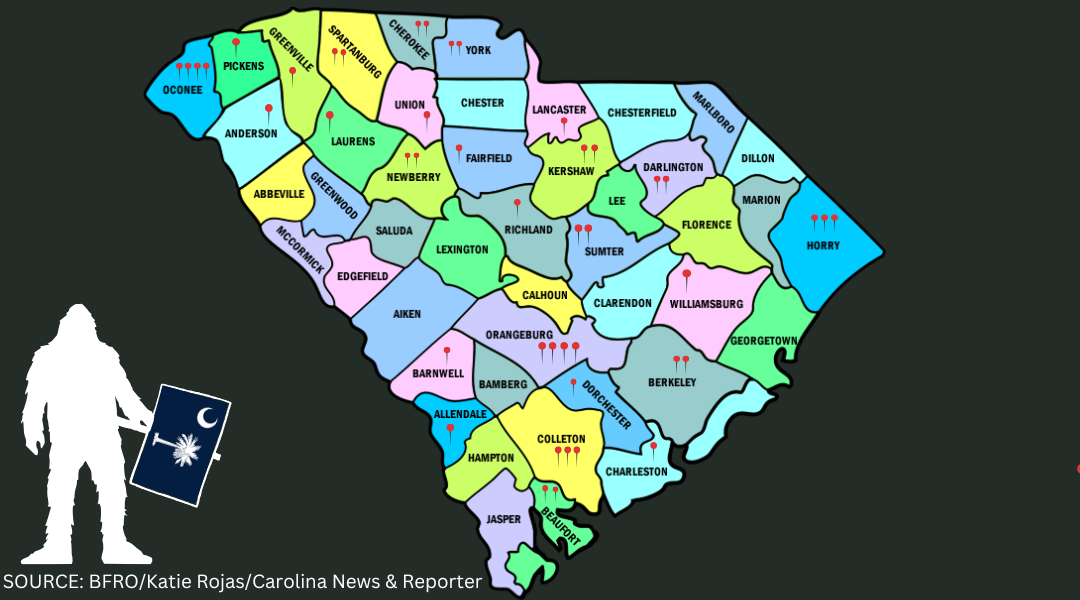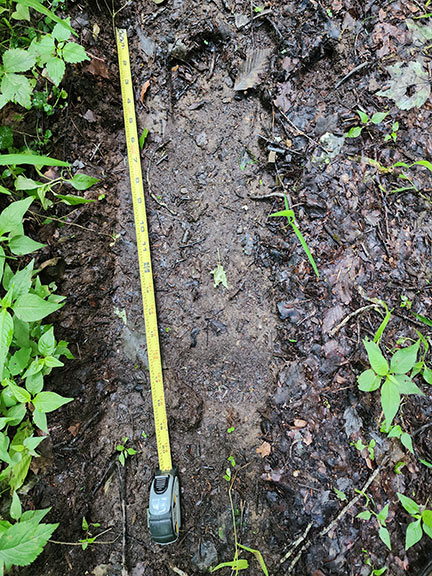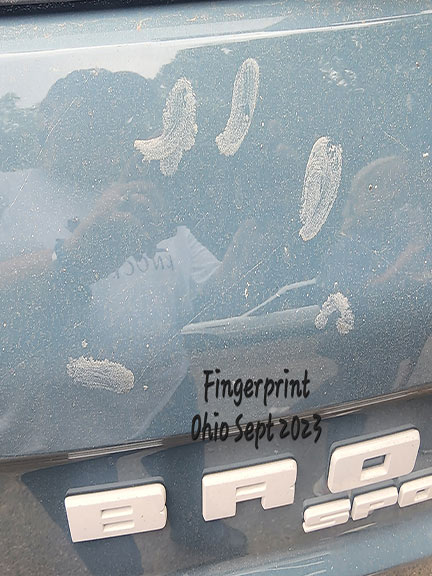Bigfoot sightings in each South Carolina county since the first in 1964 in Hampton County. (Graphic by Katie Rojas/Carolina News & Reporter)
Did the legendary Bigfoot visit South Carolina last weekend?
It wouldn’t be his first time in the Palmetto state.
An anonymous witness, who identified himself as a law enforcement officer, reported seeing a mysterious creature in Newberry County on Nov. 2 to the national Bigfoot Researcher’s Organization.
The recent report has sparked a wave of conversations and memes on social media. The sighting also had others wondering whether the creature exists.
Reports of tall, hairy creatures walking upright have come from around the world in the past 70 years. He is called Sasquatch in Canada and Yeti, with white fur, in the Himalayas in southwest Asia.
Barry Markovsky, distinguished professor emeritus of sociology at the University of South Carolina, has researched superstitions and hauntings.
Markovsky is a Bigfoot skeptic. He pointed to a lack of evidence as the reason he’s not convinced.
“When investigations are done properly, the evidence is just absolutely terrible,” he said. “What has counted in the past as evidence is often hoaxes, and those don’t get uncovered right away.”
So why do people believe in Bigfoot despite the lack of confirmed evidence? The answer can be found in the power of personal experience.
Bigfoot researchers Gwen Purcell and Terry Windell said they have had close encounters with Bigfoot.
“I never believed in Bigfoot before I saw one,” said Purcell, who lives in Pennsylvania. “I literally say he walked into my life because he walked across the cornfield across from our house. … It’s been a rabbit hole of stuff since then.”
She assumed it was a person. But as she noticed there were no cars nearby and no signs of farming equipment typically present in the area.
Purcell used to be a hunter and was familiar with local wildlife. But what she saw was tall, completely black head-to-toe, and was swinging its arms. The creature was unlike anything she had seen before.
After researching all day, she concluded it had to be Bigfoot.
“I’m telling you, I have been spending all day trying to eliminate animals, and this is the only thing that’s left,” Purcell said.
Windell said his encounter happened when he was a child growing up on his grandparents’ farm in Upstate South Carolina. Windell said he would recognize native animals’ sounds. But sometimes he would hear weird howls and screams.
Years after Windell’s experience, he found out those sounds he heard were documented as the Ohio howl, which is commonly attributed to Bigfoot.
“There are subsonics in there that human beings can’t make,” Windell said. “It’s not just somebody out in the woods making a noise trying to spoof you.”
Markovsky said many Bigfoot believers point to their own experiences as evidence.
“A lot of people who believe do have room for a little bit of skepticism,” Markovsky said. “But certainly people who have had a personal experience that they interpret as a Bigfoot sighting, that becomes very convincing to them.”
TV shows and documentaries play a role in shaping public belief in Bigfoot. But Markovsky said their presentation of evidence is overly dramatic.
“There’s often music and atmospheres created in these TV productions and pseudo documentaries that are all geared toward trying to make this really bad evidence seem a lot more convincing than it really is,” he said.
That’s one of the reasons why scientific investigators are so skeptical. It’s not just the way Bigfoot is presented in the media, but the lack of evidence, he said.
Purcell and Windell said they’re aware people might make fun of their beliefs. But they don’t let those comments discourage their research.
“I don’t try to convince skeptics anymore because if they don’t believe it, then they’re just not going to believe,” Purcell said. “I do tell a lot of them, though, if you don’t believe me, come to my house. Go with me on a camping expedition because I guarantee when you leave the woods, you may not fully believe in Bigfoot, but you’ll believe that something is there. Something is out there – weird or unexplainable.”
There are many polarizing opinions about Bigfoot. Some people don’t agree, and that’s OK, Windell said.
“We can still be friends, hang out and eat pizza,” he said.
Windell is grateful for the skeptics he encounters – they’re a source of motivation.
“I will say to the skeptics out there, great, we need you guys,” Windell said. “We need you to keep us on our toes and push us and make us do better research.”
Whether or not Bigfoot exists, Purcell said her encounter has changed her life for the better.
“Until Bigfoot walks out of the woods and sits down around the fire and has a beer with me and tells me how he’s doing all this stuff, we’re all guessing,” Purcell said. “And if I ever do get a chance to sit by the fire with Bigfoot, I’m shaking his hand, because he’s given me a lot and doesn’t even know it.”
A possible sign of Bigfoot activity is this photo showing a 20″ animal footprint, provided by a Pennsylvania researcher. (Photo courtesy of Gwen Purcell/Carolina News & Reporter)
A possible sign of Bigfoot activity is this photo of a large handprint on a car, provided by a researcher. (Photo courtesy of Gwen Purcell/Carolina News & Reporter)
The latest encounter involved a hunter who said he saw a Bigfoot at dawn in Newberry County, 25 miles northwest of Columbia. (Photo provided by The Bigfoot Field Researchers Organization/Carolina News & Reporter)
ABOUT THE JOURNALISTS

Katie Rojas
Rojas is a senior journalism student from Irmo, S.C. She has written opinion pieces for the student-run Daily Gamecock for two years and interned with Emily Marketing in Newberry, S.C. When she’s not chasing stories, she loves to travel and find her next adventure.

Geri Johnson
Johnson is a journalism and sociology double major at the University of South Carolina. She is a communications intern at USC’s Molinaroli College of Engineering and Computing. After graduating, she hopes to attend law school.





